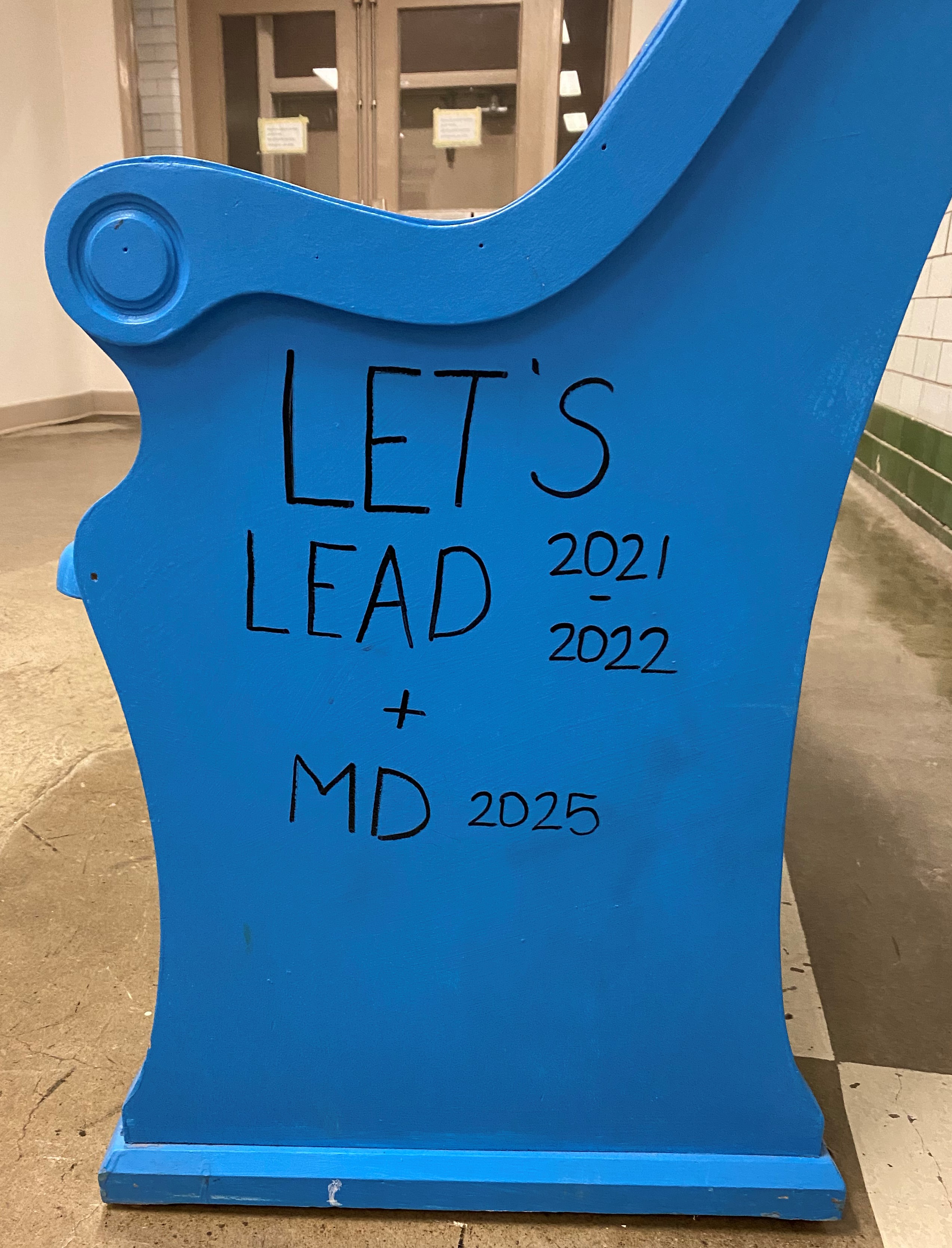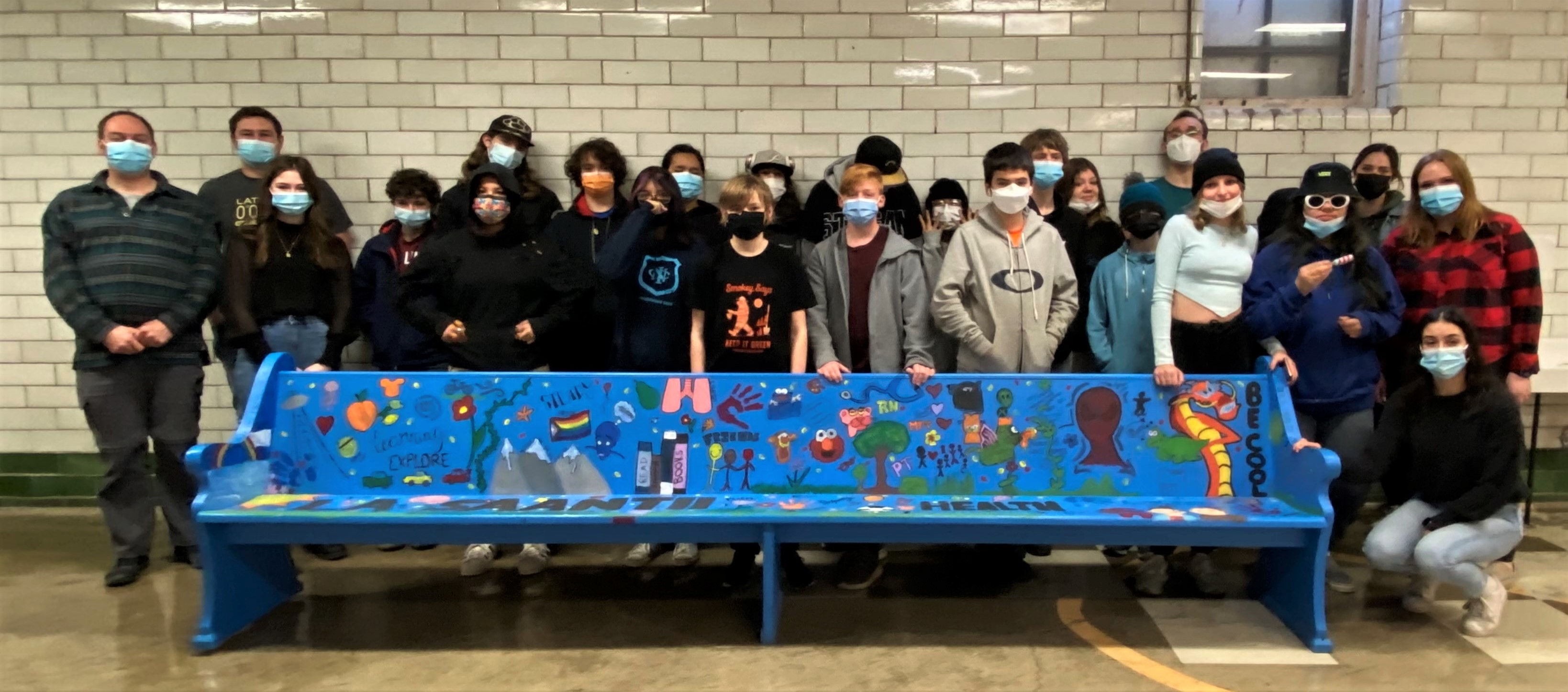
Moving mountains: the uphill battle Westmount students face with mental health
In our second semester of our first year of medical school, we spent our spare time working with the students at Westmount Community School as part of an urban inner-city practicum for Making the Links: A Global Health Certificate Program.
By Kayla Cropper, Candelaria Aristizabal Londono, Lucas Fisher, Graham BereshWe had heard great things about the program from students who had previously completed the certificate and we felt that this was an effective way to add to our skill set as medical trainees. The program also offered us the chance to learn about cultural humility in a practical setting and to gain insight into the needs of our communities firsthand.
Westmount Community School offers a special program called Let’s Lead – Nīkānētān for Grade 8 students across the city. This program aims to provide students with the opportunity to build leadership skills through holistic, experiential education. This class became the focus of most of our time at Westmount.
We began our winter practicum believing we could share our knowledge of the body and contribute to the Let’s Lead students' understanding of science, medicine, and health. Initially we provided short interactive lessons on body systems.
This consisted of small interactive sessions on the respiratory, cardiovascular, musculoskeletal and reproductive systems. We loved being able to share our passion for anatomy and physiology with the students. Our goal was to create a final project that showcased their existing and new-found knowledge on what health meant to them.
We quickly realized we were the ones learning the most. The students at Westmount taught us about what health and wellness means to their generation. Upon reflecting on these concepts, they emphasized mental health.
Children are struggling with their mental health and lack the support and care that they deserve. In the Let’s Lead class, students are advocating for Saskatchewan children by writing to members of Parliament about the dire need for more mental health support in schools, such as implementing access to mental health counselors in every school in Saskatchewan. There needs to be immediate attention given to children’s mental health, especially following the collective trauma of a global pandemic that facilitated isolation.

In our introduction to Westmount, we learned about the ways in which Residential School imagery continues to isolate children from families. The cathedral architecture of Westmount makes the building look like a Residential School, which could make Indigenous families uncomfortable and hesitant from engaging with the school.
There were also old church pews purchased to be used as benches within the school. These church pews can represent the Catholic Church and for many, may feel like a symbol of the Residential School system. We saw an opportunity to change the church pews from a symbol of the past into a symbol of health, inclusion, and wellbeing.
Our goal was to engage the Let’s Lead class in a project to revamp a church pew and paint it with imagery of health and wellness. Students did a brainstorming session about what these concepts meant to them.
Westmount Community School places an emphasis on incorporating Métis and First Nations culture teachings into their curriculum, in addition to their specific Michif and Métis Cultural programs. It was important to us to ensure that the wellness bench reflected this as well.

The students painted the traditional Michif word for Health, La Saantii, on the bench to emphasize this. We hope that the Westmount Wellness Bench reflects a space that is inviting and inclusive and will encourage the children and families of Westmount to reflect on their own meanings of health and wellness.
As we write this, we have begun our six-week summer practicums in the Indigenous communities of Kawacatoose and Île-à-la-Crosse. So far, we have been welcomed by the communities and have felt their love, kindness, and passion.
However, it is clear that the challenges children face with mental health are amplified on reserves and in rural Indigenous communities. We fear for the present and future children, and we recognize the need for urgent mental health support.

